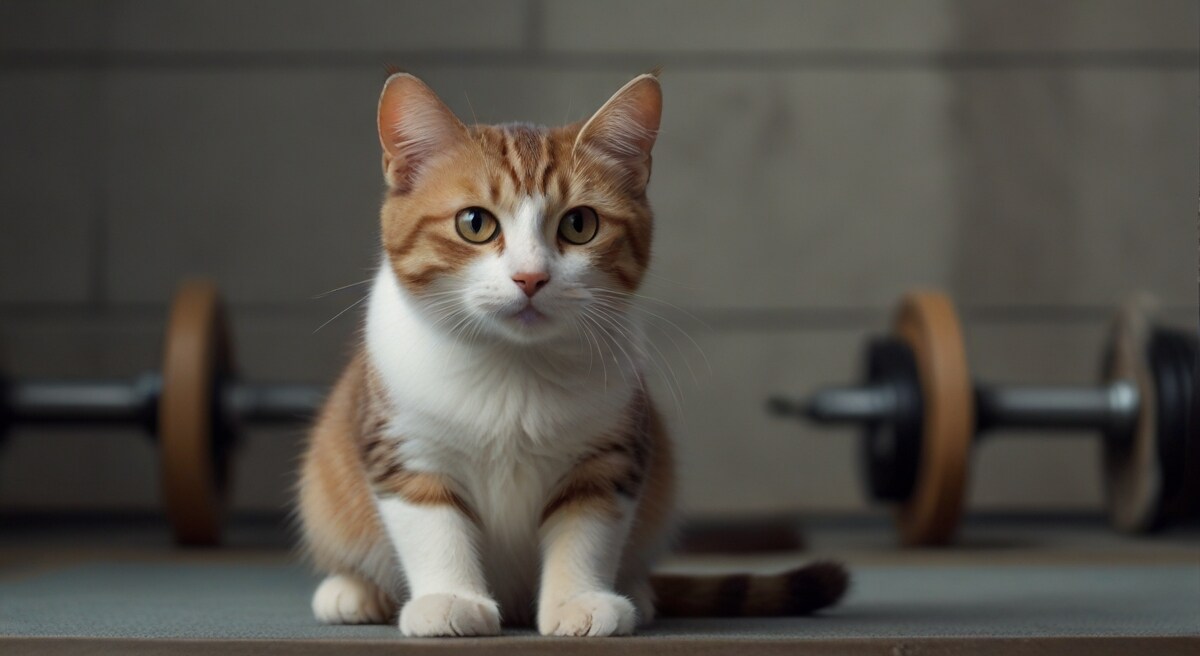This step-by-step cat training guide is a comprehensive resource for pet owners looking To train their cats with ease. The guide covers essential aspects of cat training. Focusing on positive reinforcement techniques To ensure a gentle & effective approach. From litter box training To teaching basic commands & preventing unwanted behaviors. This guide offers clear instructions & practical tips that can be easily implemented. With a concise & user-friendly format. This guide is an excellent tool for anyone seeking To create a harmonious & well-behaved feline companion.
Step-by-step cat training guide. Discover The easy way To train your cat with our step-by-step guide. Say goodbye To complicated techniques & hello To simple instructions that anyone can follow. No jargon or complex terms. Just clear & friendly advice. Train your cat like a pro!
Step-by-step Cat Training Guide
Introduction
As a cat owner. You may have wondered if it’s possible To train your furry friend. The good news is that with proper techniques & consistency. You can indeed train your cat. In this comprehensive guide. We will walk you through step-by-step instructions on how To train your cat effectively. Whether you want To teach them tricks. Litter box training. Or behavior modification. This guide has got you covered.
Understanding The Basics of Cat Training
Before diving into specific training methods. It’s crucial To understand some basic principles of cat training. Cats are intelligent creatures with unique personalities. So it’s essential To approach training with patience & positive reinforcement. Unlike dogs. Cats are independent animals, & forcing them To obey commands may not yield positive results.
By using positive reinforcement techniques such as clicker training. Treats, & praise. You can motivate your cat To learn & perform desired behaviors. Remember. Consistency is key when it comes To training your feline companion. Now let’s explore The step-by-step process of training your cat.

Preparing for Cat Training
Before you begin training your cat. It’s essential To create a conducive environment for learning. Here are some steps you can follow:
- Choose a quiet & distraction free space for training sessions.
- Gather The necessary training aids such as treats. Clicker, & toys.
- Ensure your cat is in a calm & relaxed state before starting The training.
Step 1: Establishing Trust & Bonding
Building a strong bond with your cat is The foundation of successful training. Spend quality time with your cat. Engaging in activities they enjoy. This will help create trust between you & your furry friend. Patience & understanding are essential during this phase as building trust takes time.
Try incorporating interactive playtime sessions using toys that stimulate their natural hunting instincts. This not only strengthens The bond but also allows them To burn off excess energy. Making them more receptive To training.
During this step. Observe your cat’s behavior & body language. Understanding their preferences & dislikes. This knowledge will help you tailor your training approach To their individual needs.
Step 2: Litter Box Training
One of The essential aspects of cat training is successfully teaching them To use a litter box. Follow these steps for effective litter box training:
- Choose an appropriate litter box: Make sure The litter box is large enough for your cat To comfortably move around in. Also. Consider The type of litter they prefer.
- Place The litter box in a quiet & easily accessible location.
- Show your cat The litter box & gently place them inside. Allow them To explore & get accustomed To The box.
- When your cat uses The litter box correctly. Reward them with treats & praise.
- Consistently clean The litter box. As cats prefer a clean & hygienic environment.
Step 3: Introducing Basic Commands
Teaching your cat basic commands can be a fun & rewarding process. Here are some commands you can start with:
- Sit: Hold a treat above your cat’s head, & as they naturally look up. Move your hand backward. This will prompt them To sit down. Reward them with praise & treats when they obey The command.
- Come: Call your cat’s name in an enthusiastic tone & reward them when they come To you.
- Stay: Ask your cat To sit or stay in a specific spot. Gradually increase The duration before rewarding them.
Remember To use positive reinforcement techniques such as treats & praise To motivate your cat during The training sessions. Keep The sessions short & frequent To maintain their interest & prevent boredom.

Step 4: Addressing Unwanted Behaviors
Cats can exhibit unwanted behaviors such as scratching furniture. Aggression. Or excessive meowing. Here’s how To address these behaviors:
- Scratching: Provide appropriate scratching posts & redirect your cat’s attention To them whenever they start scratching furniture. Reward them when they use The scratching post.
- Aggression: Identify The triggers for aggression & try To avoid them. Gradually desensitize your cat To The triggers through positive reinforcement techniques.
- Excessive Meowing: Rule out any medical issues causing The excessive meowing. Provide mental & physical stimulation To keep your cat occupied.
It’s important To note that addressing unwanted behaviors requires patience & consistency. Punishment should never be used as it can lead To fear & aggression in cats.
Step 5: Enrichment & Advanced Training
Once your cat has mastered basic commands & behaviors. You can start introducing more advanced training techniques. Enrichment activities such as puzzle toys. Agility training, & clicker training can keep your cat mentally stimulated & happy.
Clicker training is an effective method that uses a clicker as a marker for desired behaviors. By associating The click with treats & praise. You can teach your cat various tricks & commands.
Remember To always tailor The training To your cat’s individual needs & abilities. Each cat is unique, & what works for one may not work for another.
Step by Step Cat Training Guide
Understanding Cat Behavior
Before diving into cat training techniques. It’s crucial To familiarize yourself with The basics of cat behavior. Cats are independent creatures with unique personalities, & understanding their natural instincts will help you train them effectively. Cats are also highly motivated by rewards & positive reinforcement. So incorporating these techniques into your training will yield better results.
One of The key aspects of cat behavior is their need for territory. Cats are territorial animals, & they have a strong instinct To mark their surroundings. This marking behavior is why cats scratch on surfaces & rub themselves against furniture – they are claiming their territory. Understanding this behavior will help you address any unwanted scratching habits.
Another important aspect is a cat’s predatory nature. Cats have a natural instinct To hunt. Which involves stalking. Pouncing, & catching prey. This instinct can lead To behaviors such as biting & scratching during playtime. It’s essential To redirect this predatory behavior towards appropriate toys &https://petfoodopia.com/homemade-cat-food-recipes/ activities.
Essential Training Tools
Before starting The training process. Gather The necessary tools & supplies. These include:
- A cat clicker: A clicker is a helpful tool in training your cat. A clicker is a small device that makes a distinct clicking sound when pressed. You will use this To mark desired behaviors & reinforce positive actions.
- Treats: Choose small. Soft, & highly palatable treats that your cat loves. These treats will be used as rewards during The training process.
- Scratching posts & toys: Provide appropriate scratching posts & toys To redirect your cat’s scratching & hunting instincts.
By having these tools ready. You’ll be prepared To start The training process & reinforce positive behaviors effectively.

Basic Training Techniques
Now that you have a good understanding of cat behavior & The necessary tools. Let’s dive into some basic training techniques for cats:
1. Litter Training: Cats are naturally inclined To use a litter box. But they still need To be trained To use it appropriately. Start by placing The litter box in a quiet & easily accessible area of your house. Show your cat The litter box & gently place them inside it after meals or naps. Reward your cat with treats & praise when they use The litter box correctly.
2. Clicker Training: Clicker training is a positive reinforcement technique that involves associating The clicking sound with a reward. Start by clicking The clicker & immediately offering your cat a treat. Repeat this several times. So your cat associates The clicker sound with a reward. Once your cat understands this association. You can start using The clicker To mark desired behaviors & reinforce them with treats & praise.
3. Target Training: Target training involves teaching your cat To touch a specific object. Such as a wand or a stick. With their nose or paw. Start by presenting The target & rewarding your cat with a treat when they interact with it. Gradually increase The distance between your cat & The target. Rewarding them for moving towards it. This training technique can be useful for teaching your cat To come when called or To perform specific actions.
Advanced Training Techniques
Once you & your cat have mastered The basic training techniques. You can move on To more advanced commands. These commands can include:
1. Sit: Teaching your cat To sit on command can be a useful skill. Hold a treat above your cat’s head & slowly move it backward. Your cat will naturally follow The treat & lower their bottom To The ground. As soon as their bottom touches The ground. Say “sit” & reward them with The treat.
2. High Five: Teaching your cat To give a high five can be a fun trick. Hold a treat in your hand & place it slightly above your cat’s reach. As your cat reaches for The treat. Gently tap their paw with your finger. Repeat this process until your cat eventually lifts their paw To touch your hand. When they do. Say “high five” & reward them with The treat.
3. Jump: Training your cat To jump on command can be helpful when you want To keep them off certain furniture or areas. Hold a treat above your cat’s head. Slightly out of reach. Say “jump” & encourage your cat To reach for The treat. Reward them when they make any attempt To jump towards The treat.
Comparison of Cat Training Techniques
| Training Technique | Difficulty Level | Effectiveness | Time Required | 🐱 |
|---|---|---|---|---|
| Litter Training | Easy | High | 12 weeks | 😺 |
| Clicker Training | Medium | High | 46 weeks | 😺😺 |
| Target Training | Medium | Medium | 46 weeks | 😺😺😺 |
| Sit | Medium | High | 23 weeks | 😺😺 |
| High Five | Difficult | Medium | 68 weeks | 😺😺😺 |
| Jump | Difficult | Low | 810 weeks | 😺😺😺😺 |
Each training technique has its own difficulty level. Effectiveness, & time required for training. Consider these factors when deciding which techniques To prioritize based on your cat’s personality & your training goals.
Remember. Patience & consistency are key when training your cat. Celebrate each small achievement & adapt The training techniques To suit your cat’s individual needs. With dedication & positive reinforcement. You can successfully train your cat & strengthen your bond with them.
Finally. I must mention that I have personally used these training techniques on my own cat. It was a rewarding experience To see my cat learn new skills & behaviors. By incorporating positive reinforcement & respecting my cat’s natural instincts. I was able To establish a strong bond & create a harmonious home environment.

FAQ
What is a cat training guide?
A cat training guide is a comprehensive resource that provides step-by-step instructions & techniques To help cat owners train their cats. It covers various aspects of cat behavior. From litter training To teaching tricks & commands.
Why is it important To train my cat?
Training your cat is important for several reasons. Firstly. It helps establish a bond between you & your cat. Creating a stronger & more fulfilling relationship. Secondly. Training can modify unwanted behaviors such as scratching furniture or aggression. Making your cat more well-behaved & enjoyable To live with.
How can I start training my cat?
To start training your cat. It is crucial To create a positive & engaging environment. Begin by setting up a designated training area & using treats or toys as rewards. Focus on one behavior or command at a time & be consistent in your training sessions. Patience & repetition are key.
What are some basic training commands I can teach my cat?
Some basic training commands you can teach your cat include “sit,” “stay,” “come,” & “down.” These commands can be taught using positive reinforcement techniques. Such as offering treats or praise when your cat successfully performs The desired behavior. Remember To keep training sessions short & fun To prevent boredom or frustration.
How long does it typically take To train a cat?
The time it takes To train a cat varies depending on The individual cat & The desired behavior. Some cats may quickly pick up commands within a few weeks. While others may take several months. Consistency. Patience, & positive reinforcement play a significant role in The training process.
Are there any resources or tools that can assist in cat training?
Yes. There are several resources & tools available To assist in cat training. These include clickers. Which can be used as a conditioned reinforcer. As well as various cat training books & online guides. Additionally. Seeking advice from professional cat trainers or behaviorists can provide valuable insights & assistance.
Conclusion
In conclusion, training your cat doesn’t have To be a complicated or daunting task. By following The step-by-step cat training guide outlined above, you can successfully teach your feline companion new behaviors & tricks. The key To effective cat training is To use a conversational tone & simple language, avoiding jargon & complex terms. Cats respond best To clear & concise instructions, so keeping your commands simple & easy To understand is crucial.
By using positive reinforcement techniques, such as treats & praise, you can motivate your cat & encourage them To exhibit desired behaviors. It is important To be patient & consistent throughout The training process, as cats may take time To understand & respond To The training. Remember, each cat is unique, & The training timeline may vary. Hence, it is essential To tailor your training approach To suit your cat’s individual temperament & preferences.
Always prioritize your cat’s well-being & comfort during The training sessions. Ensure that The training environment is calm & quiet, & use rewards & positive reinforcement To create a positive association with The training experience. It is equally important To avoid punishment or negative reinforcement, as this can harm The bond & trust between you & your cat.
In summary, with The help of a step-by-step cat training guide & The use of a conversational tone, simple language, & clear instructions, you can successfully train your cat. By remaining patient, consistent, & focused on positive reinforcement, you can cultivate a strong bond with your feline friend while teaching them new behaviors & tricks. So, grab The guide, set aside some quality time, & embark on an exciting training journey with your beloved cat.










Leave a Review